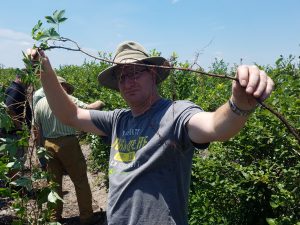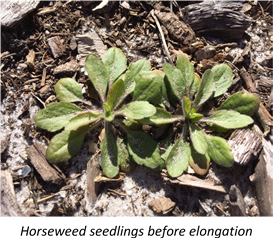Have a small plot of land? Want to diversify? New to farming?
Learn how to grow, market and sell Pick-Your-Own blueberries and make more money on less land!
Join us on Thursday, February 22, 2018 for a two and a half hour class that will include:
• Virtual Fieldtrip
• Crop Profile
• Q & A Session with a specialist, farmer and buyer of the product.
• Networking
• Dinner
By the end of the class you will know if growing Pick-Your-Own blueberries is right for you. Dinner will be served at 5:30. Pesticide recertification credits available for all Ultra-Niche Classes. Purchase tickets online at: https://www.eventbrite.com/e/ultra-niche-crops-pick-your-own-blueberries-tickets-38006277800
Three locations available: Please select location of choice when buying tickets.
• Rutgers Cooperative Extension of Cape May County, 355 Court House/So. Dennis Road (Route 657), Cape May Court House, NJ 08210
• Rutgers Cooperative Extension of Somerset County, 310 Milltown Rd. Bridgewater, NJ 08807-3587
• Rutgers EcoComplex, 1200 Florence Columbus Road, Bordentown, NJ 08505
For more information call Jenny Carleo, Agricultural Agent at (609) 465-5115 or email Jennifer Matthews at jmatthews@aesop.rutgers.edu.
Deadline to register is February 16, 2018 at 5:00 pm.


 of the first weeds that will break through the residual herbicide coverage provided by preemergence applications is horseweed, aka marestail. Horseweed has two primary periods of emergence, from late March through June and from late summer through late fall. Some of the most problematic horseweed emerges in the fall and over winters as small rosettes. If growers don’t control it with fall-applied residual herbicides, the weed has an excellent head start on the spring growing season, especially after a mild winter. Horseweed plants remain in the rosette stage through mid-April, followed by stem elongation (bolting) and rapid growth to an height of 3 to 6 feet. Plants that emerge the previous fall will bolt earlier than spring-emerging plants. Horseweed is most easily controlled when in the seedling, or rosette stage, and spring postemergence herbicides should be applied before stem elongation.
of the first weeds that will break through the residual herbicide coverage provided by preemergence applications is horseweed, aka marestail. Horseweed has two primary periods of emergence, from late March through June and from late summer through late fall. Some of the most problematic horseweed emerges in the fall and over winters as small rosettes. If growers don’t control it with fall-applied residual herbicides, the weed has an excellent head start on the spring growing season, especially after a mild winter. Horseweed plants remain in the rosette stage through mid-April, followed by stem elongation (bolting) and rapid growth to an height of 3 to 6 feet. Plants that emerge the previous fall will bolt earlier than spring-emerging plants. Horseweed is most easily controlled when in the seedling, or rosette stage, and spring postemergence herbicides should be applied before stem elongation.
 Clopyralid – Use Stinger at 3 to 4 fl oz/A of. Stinger has a 24(c) Special Local Need label for weed control in blueberry since 2013. Stinger acts as both a postemergence foliar absorbed herbicide and a residual herbicide. The initial twisting and curling observed after application to susceptible species is due to the foliar absorption. Do not apply Stinger from one week prior to bloom until one week after bloom. Stinger can eventually be tank-mixed with Gramoxone to increase the spectrum of weeds controlled and defoliate existing foliage of perennial asters, goldenrod species and mugwort. Donot allow spray or drift to contact green bark, leaves, or fruit as crop damage may result as shown on the picture. Time all applications to maintain a 30-day PHI (PreHarvest Interval). Do NOT apply Stinger in a hand-held sprayer used to “spray until wet”. Stinger is a residual herbicide that must be applied on a rate per acre basis with a precisely calibrated sprayer. Read safety precautions on the label.
Clopyralid – Use Stinger at 3 to 4 fl oz/A of. Stinger has a 24(c) Special Local Need label for weed control in blueberry since 2013. Stinger acts as both a postemergence foliar absorbed herbicide and a residual herbicide. The initial twisting and curling observed after application to susceptible species is due to the foliar absorption. Do not apply Stinger from one week prior to bloom until one week after bloom. Stinger can eventually be tank-mixed with Gramoxone to increase the spectrum of weeds controlled and defoliate existing foliage of perennial asters, goldenrod species and mugwort. Donot allow spray or drift to contact green bark, leaves, or fruit as crop damage may result as shown on the picture. Time all applications to maintain a 30-day PHI (PreHarvest Interval). Do NOT apply Stinger in a hand-held sprayer used to “spray until wet”. Stinger is a residual herbicide that must be applied on a rate per acre basis with a precisely calibrated sprayer. Read safety precautions on the label.